|
Plastic Planet●EARTH
photo and text by Fujiwara Koichi
ISBN978-4-591-16285-9
publisher: POPLAR PUBLISHING Co.,LTD.
|
プラスチック惑星・地球
藤原幸一 著
ポプラ社
|
|
|
|
|
|
| a |
There are huge amount of plastic wastes in the natural environment where
wild monkeys thrive on. The photographs taken by Fujiwara Koichi
strongly appeal for the intense discomfort and misery. What can we
do now for the Earth, for mother nature and for ourselves?
レジ袋、ストロー、食品トレーetc.さまざまな生活用品に広く使われているプラスチック。今や私たちの生活に欠かせません。これらは世界で大量に生産され続けており、同時に大量に廃棄されています。なおかつプラスチックの生産量・廃棄量は年々増えつづけています。とくに近年注目されているのはマイクロプラスチックの問題。マイクロプラスチックとは、海流に漂うなかで微粒子化したプラスチックのことで、食物連鎖の過程であらゆる動物の体内に蓄積されます。最終的には人間の体内に残るわけですが、それが人体にどれほどの悪影響を及ぼすかはわかっていません。私たち人類は、自らの消費活動によって出したプラスチックごみを食べているのです。もちろんほかの野生動物たちも。
本書は、この問題を取りあげ、読者とともに未来のあるべきすがたを考えます。その手段として、ある島に生息するカニクイザルの親子に注目しました。彼らの生活視点で地球を見ると、いかにして海洋プラスチック汚染が進行していくのかが見えてきます。海洋プラスチックごみの多くは、陸地に捨てられたプラスチックごみが川を下って海に出るというルートをたどりますが、そのルートがそのままカニクイザルの生活行動と一致するのです。カニクイザルがおりなす自然の営みの中に存在する大量のプラスチックごみ。その強烈な違和感と不快感を、藤原幸一さんの写真が強く訴えかけてきます。私たちが今、地球のため、動物たちのため、そして自分たちのためにできることとは何なのかを考えさせられる一冊です。
|
|
|
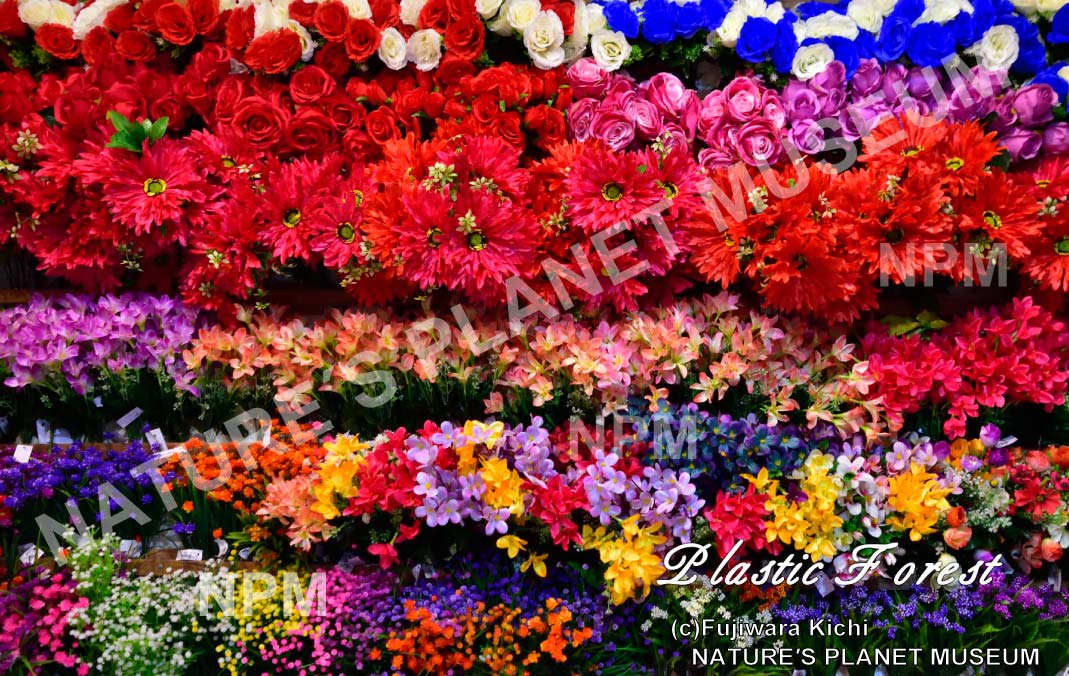
|
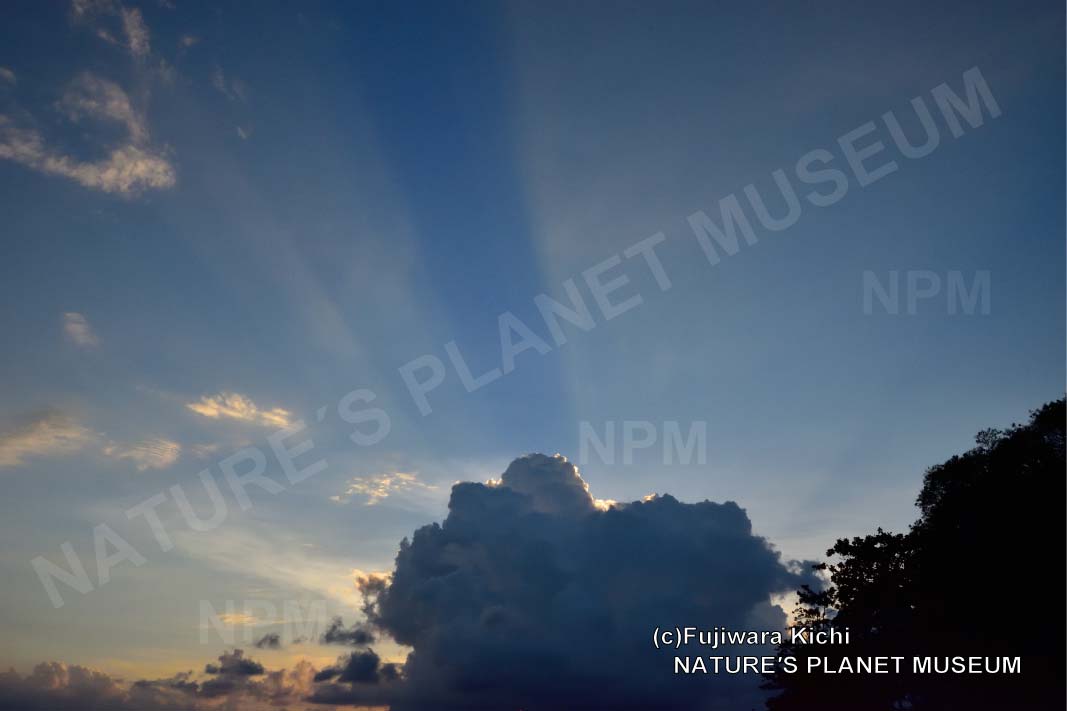
|
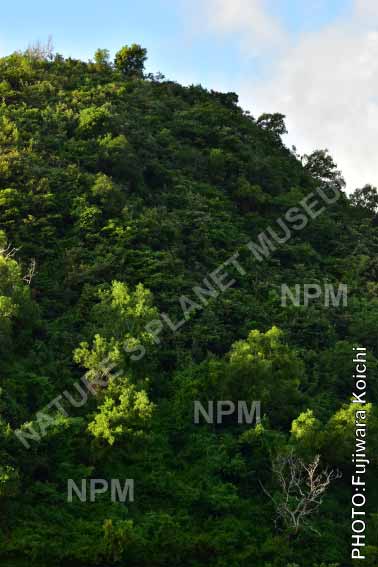 |
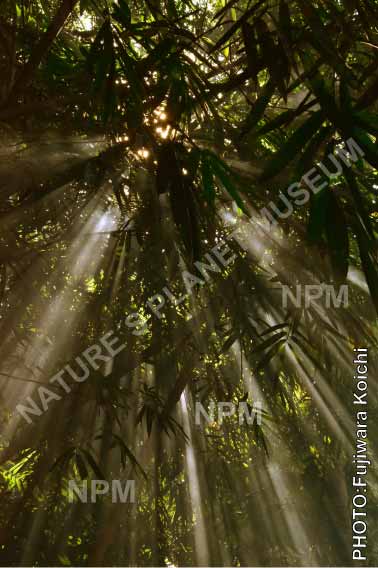 |
|
| P1-5 total 6 photos |
|
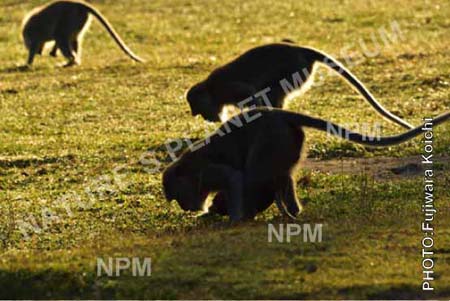
|
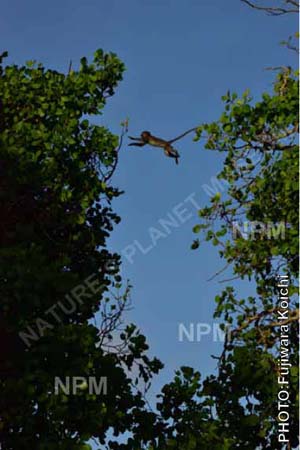
|
|
Morning
sun arrives at the forest.
The morning light grows over
the overgrown trees and streams through the branches. Wildlife begins to awake.
A
sleepy monkey just got up and is climbing a giant tree smoothly.
Jump
from tree to tree!
"This
water is delicious!
A
male monkey tells everyone.
Morning
is the time to drink water. The monkeys here will not drink dirty water at all.
Early in the morning, dew
drops on the grass are the cleanest and the most delicious. The monkeys love to
drink it.
|
|
| P6-9 total 5 photos |
|
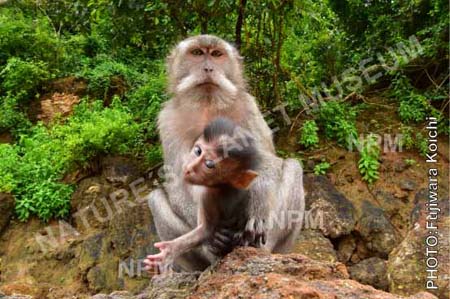
|
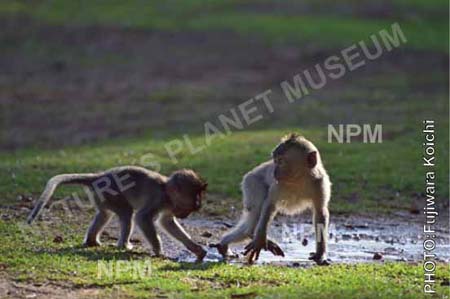
|
|
A
mother and her baby monkey live in this forest.
There
is a tiny baby monkey only one month, held by his mother.
"Let's
play again like yesterday"
The
baby’s friend calls out from the top of the tree.
"Can
I go and play with him?"
The
baby askes his mother.
"Wait
a minute"
Having
said that, his mom started climbing the tree.
His
mother looked around from above the tree.
She is checking to see if there are any animals that might attack small
monkeys or humans who have come to catch them.
"Okay!
You can go play now"
After
the mother said so, the baby ran happily to see his friend.
Baby
monkeys are stunned by insects, try to bite the grass and put anything that
appears in front of them into their mouth and play.
The two played so much they
forget the time.
|
|
| P10-15 total 6 photos |
|
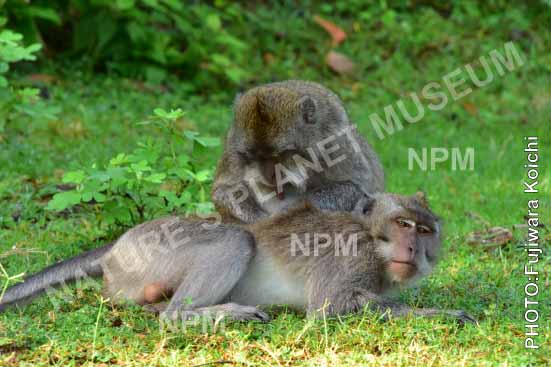
|
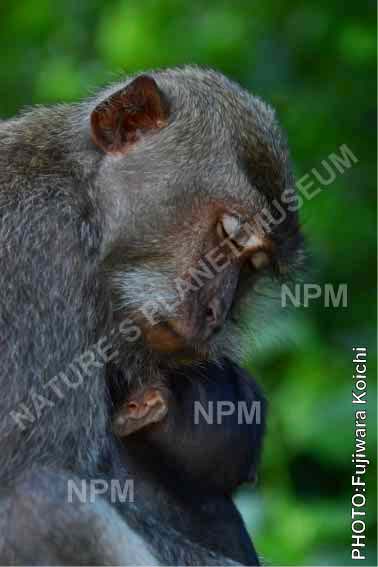
|
|
While
the baby was playing, his mother was grooming with her friends.
The
sun had risen to the top of the sky, and the mother had forgotten how much time
had passed.
She
suddenly wondered where her baby was playing.
She
looked around and found her baby playing with his friend behind the tree.
He
looked like he was having fun by putting something in his mouth. The
mother was relieved to see him and called her baby.
"Come
here! It's time to take a nap!"
When
the baby noticed his mother's voice, he came and hugged her.
His
friend also went back to his mother.
"Mom,
I am very sleepy."
The
baby started to sleep in his mother’s warm belly.
The mother, relieved to be
reunited with her baby, also fell asleep.
|
|
| P16-20 total 9 photos |
|
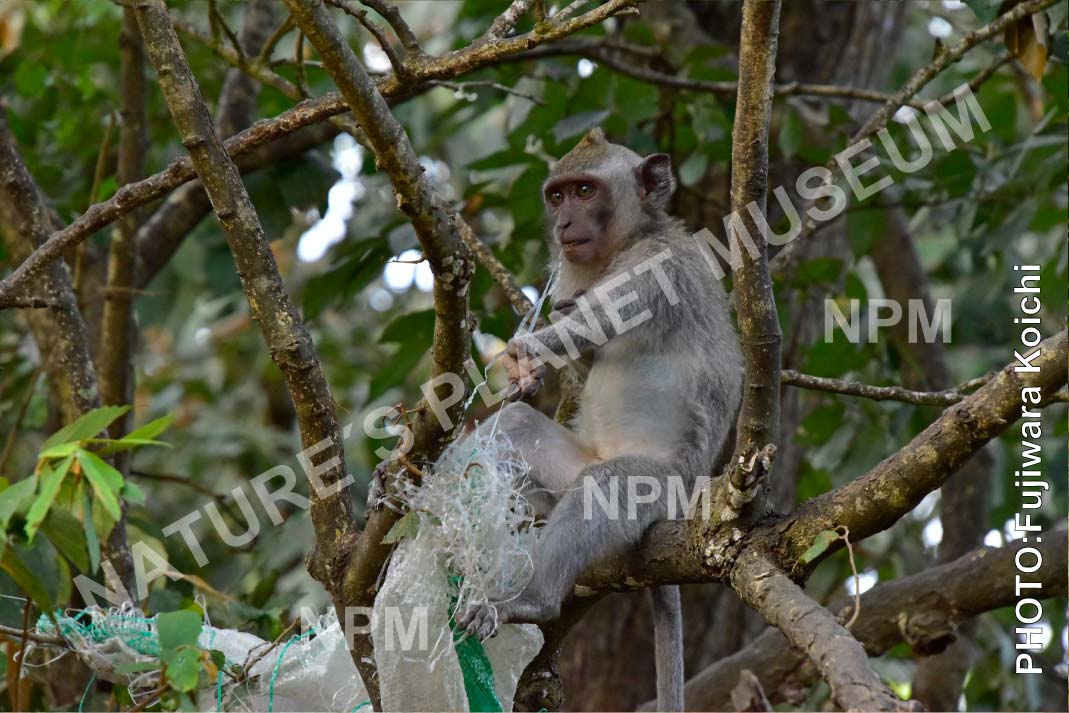
|
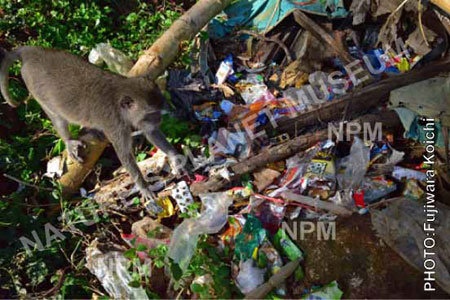
|
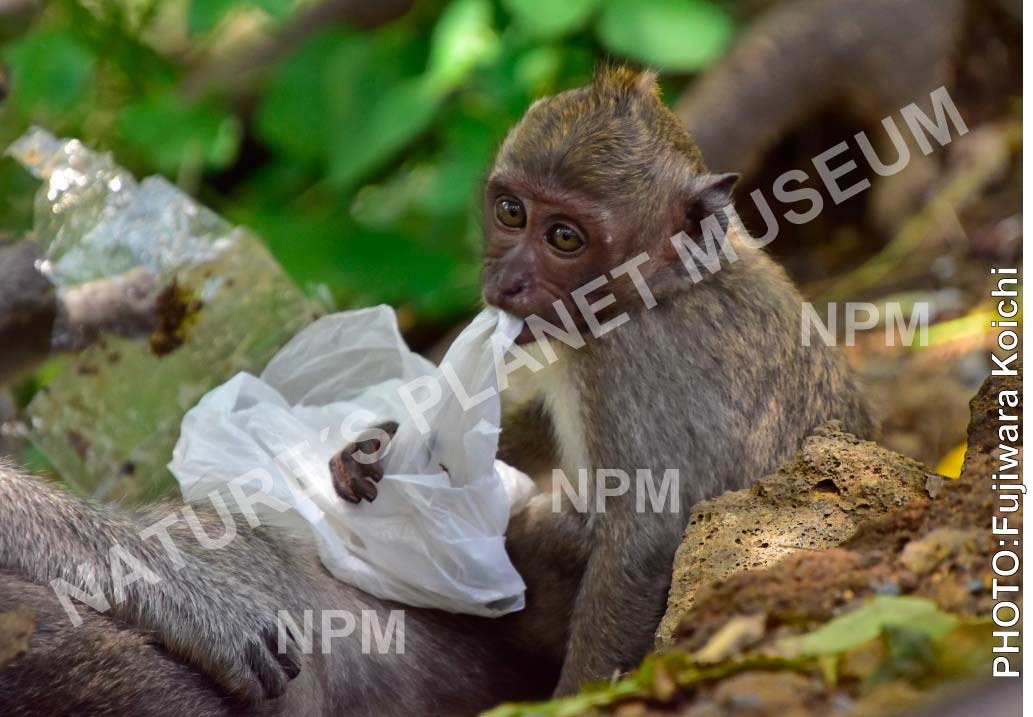
|
|
When
mother and baby wake up, their friends are having breakfast on the tree.
"It's
very sweet if you suck the roots of this flower."
"The
juice of this leaf is delicious too"
Monkeys individually search
for food and try to fill their stomachs.
"This
looks great too!"
A
monkey started eating something mysterious.
It
was a plastic string made by humans.
The
baby was curious and wanted to eat the plastic too, he tried running to a
mountain of plastic.
But
his mother grabbed her baby's tail and stopped him.
"No,
no, it's poison to your body. You can’t eat it!”
His
mother is familiar with the various plants that grow in the forest.
She
also knows which plant flowers, fruits, leaves and stems are delicious and good
for the body.
In
the forest, there is a place where human waste is dumped and accumulated.
Monkeys follow the strong smell released from the garbage and come to the
waste dumping site.
There
are some monkeys that have begun eating the plastic garbage.
In
a nearby mountain, there has already been tones and tones of rubbish dumped,
creating a mountain of rubbish.
There
are countless plastic waste, like bottles, bags, cups, and cords.
Various
wildlife lives in the forest.
|
|
| P21-27 total 10 photos |
|
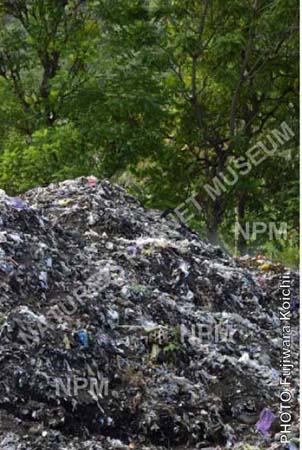
|
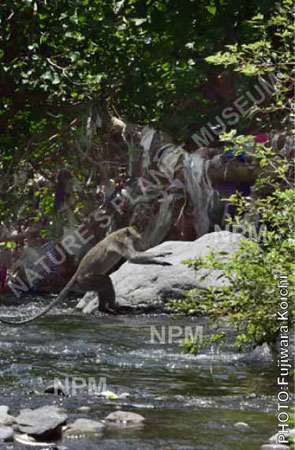
|
|
The
mother and baby monkey were curious about the plastic mountain and nervously
approach the pile of plastic.
Suddenly,
a truck full of plastic waste arrived.
"Beep
beep beeep screech!”
The
truck, making loud scary sounds is throwing plastic waste.
With
a loud rumble, plastic waste from the back of the truck started falling out.
"Be careful! It’s very dangerous!"
The
mother holding her baby quickly ran away.
"Mom,
I was hungry"
The
mother and her baby aimlessly walked in the forest.
When
they came out of the forest, they came to an open road with a puddle of water.
They
can see the river up ahead.
"Mom,
I want to eat until I’m full."
The
baby said.
"alright
then, let's go to the sea"
The
sea is connected to the river flowing through the forest.
The
mother and her baby went along the river to the sea.
Like
the forest, there are a lot of plastic wastes on the riverbank.
|
|
| P28-33 total 9 photos |
|
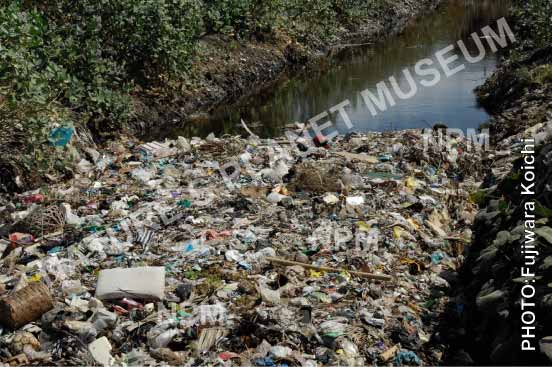 |
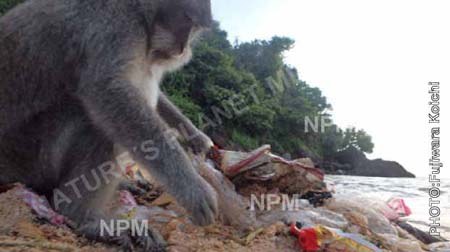 |
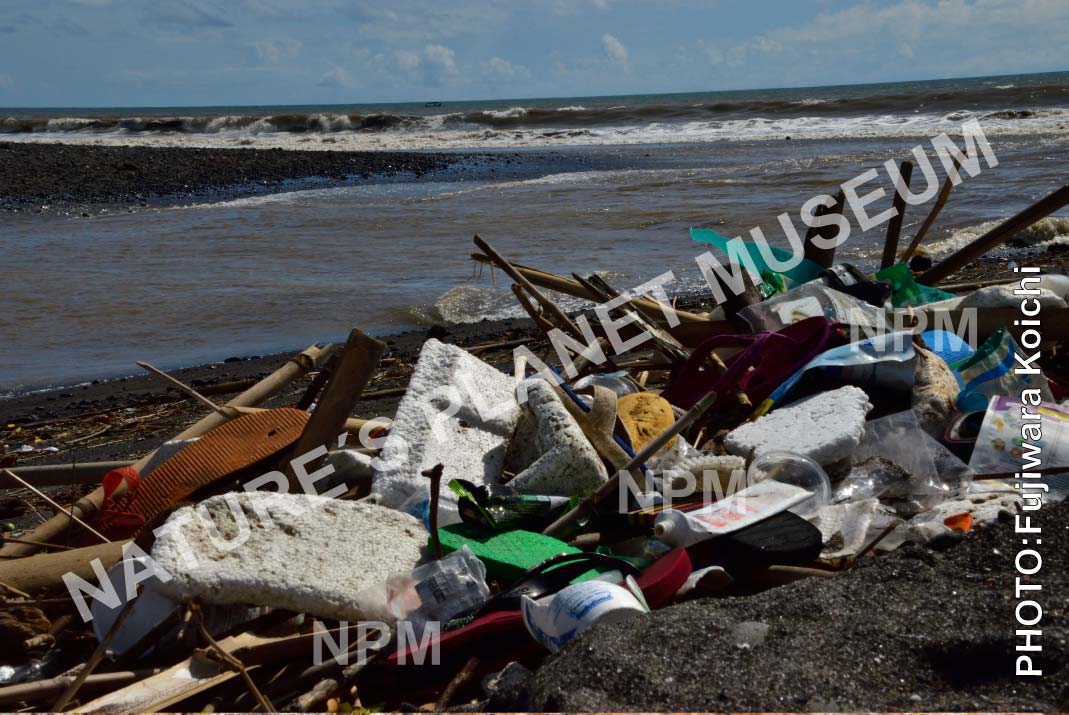 |
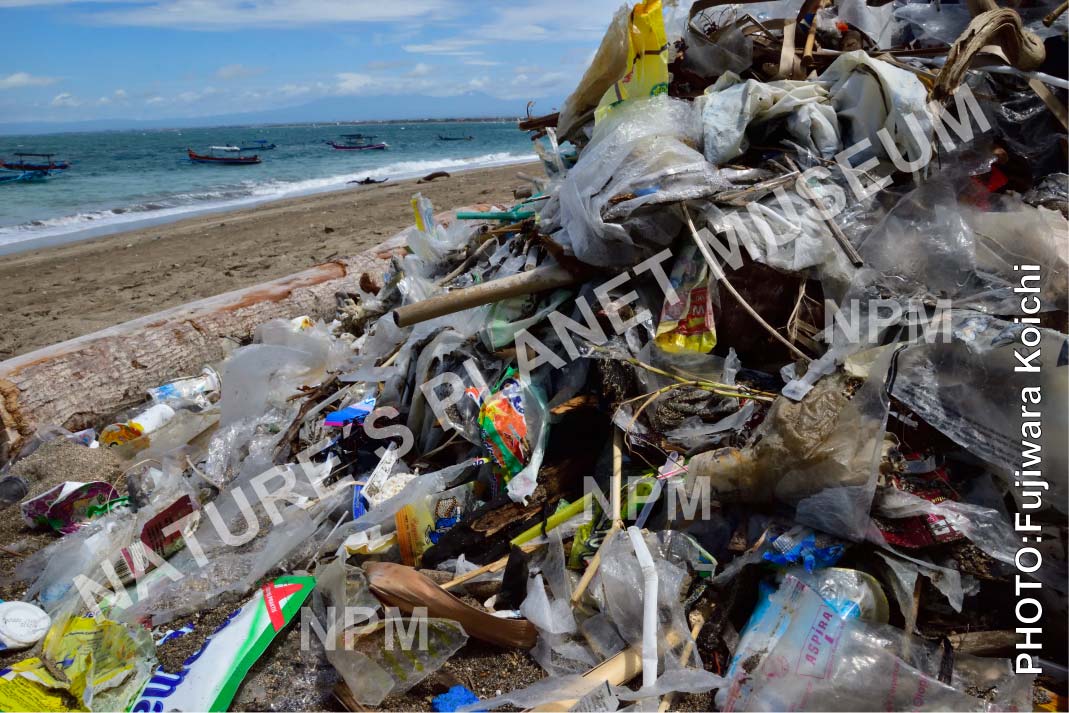 |
There
was also a place where a lot of plastic accumulated in the river.
Plastic
waste dumped in the forest are blown away by the wind and washed away by the
rain to the river.
The mother monkey with her baby arrived at the sea from the river.
The friends who arrived earlier are looking for food on the sandy beach.
However,
what they found was plastic.
The
abandoned plastic wastes in the forest washed away into the river has flowed into
the sea.
This
island produces 1200 tons of household plastic waste every day.
On
this sand beach alone, about 100 tons of household waste gathers. Most of it is plastic.
|
|
| P34-37 total 7 photos |
|
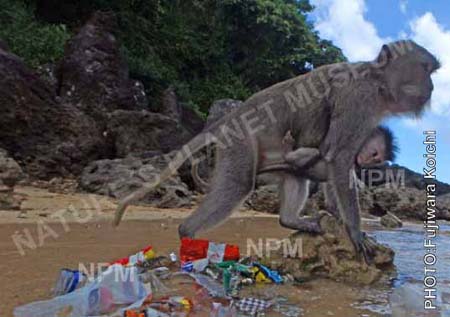
|
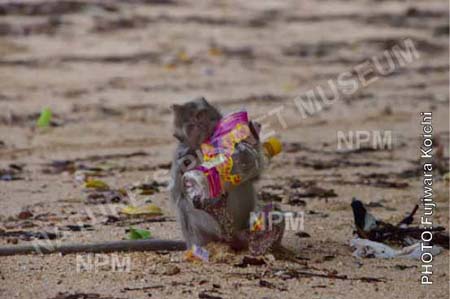 |
|
The
baby found plastic waste on the beach and asked his mother.
"Mom,
can I eat this now? There are some friends who have already eaten it."
The
mother responded to her baby with a troubled face.
"It's
totally wrong! It's the same plastic I saw in the forest and rivers. It's very
bad for everybody!"
However,
just ahead of the mother and her baby, a fellow monkey picks up a plastic
bottle and tries to put it into his mouth.
This
hungry monkey started to bite the plastic bottle that had drifted onto the
beach.
The
monkey bites various parts of the plastic bottle to taste whether it is edible
or not.
|
|
| P38-43 total 8 photos |
|
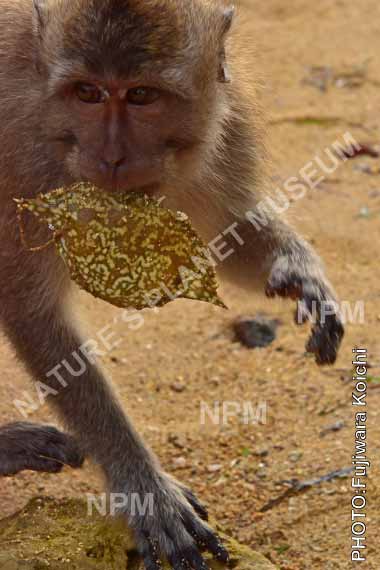 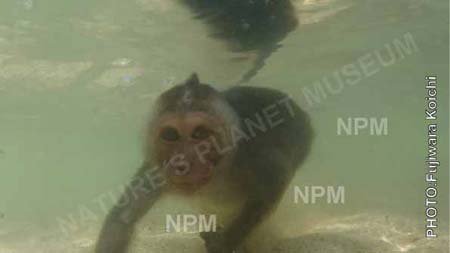
|
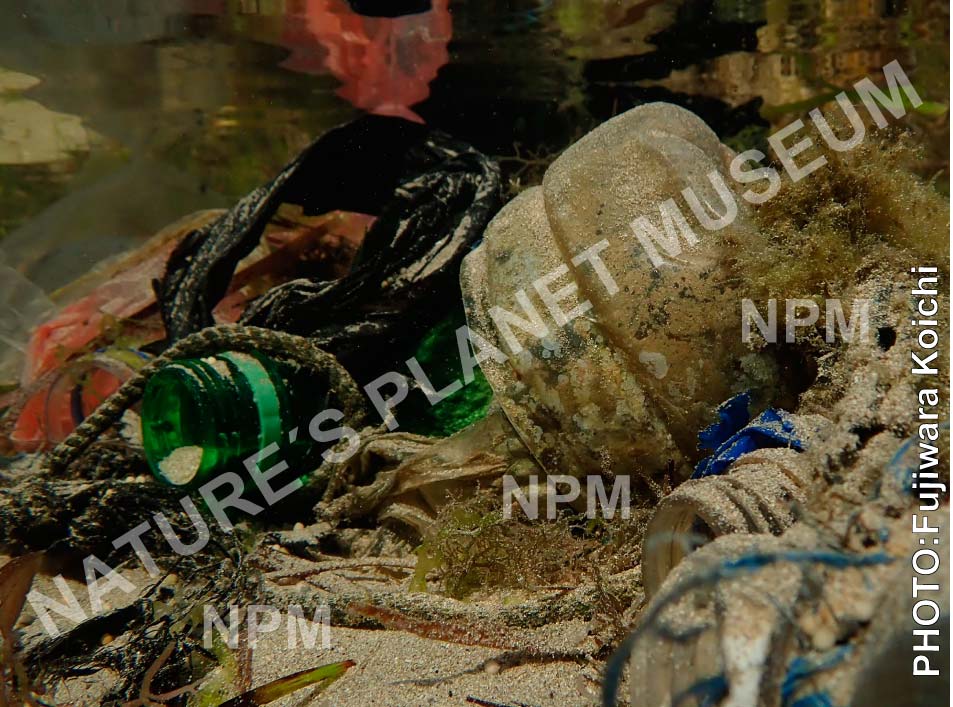
|
|
Another
fellow monkey has caught something out of the sea.
It
is a delicious crab that every monkey loves to eat.
The mother
and her baby dived into the sea together and tried to find crabs in the sand of
the seabed.
"I
found it!" the mother shouted out.
When the baby was diving in the sea to look for a crab, he found something
white and jelly-like similar to a jellyfish.
He got close. He thought, “Maybe I can eat it”
It
was not a jellyfish but a plastic bag drifting in the sea that originally had
flowed from the river.
The baby wanted to try eating it and extended his hand.
"You
can't eat that! It was the same stuff in the forest and the river."
The
mother stopped her baby from trying to eat the plastic bag in the sea.
"but
mom, my friends ate it in the forest"
"No, is no! You will get
sick."
A
lot of other plastic things, such as plastic lighters, straws, bottle lids and
toys float near the plastic bag.
The
mother found something on the sea bed and cautiously approached it.
It
was a clump of plastic rubbish clustered together.
Bottles, bags, ropes, fishing
lines, etc. all plastic.
|
|
| P44-51 total 7 photos |
|
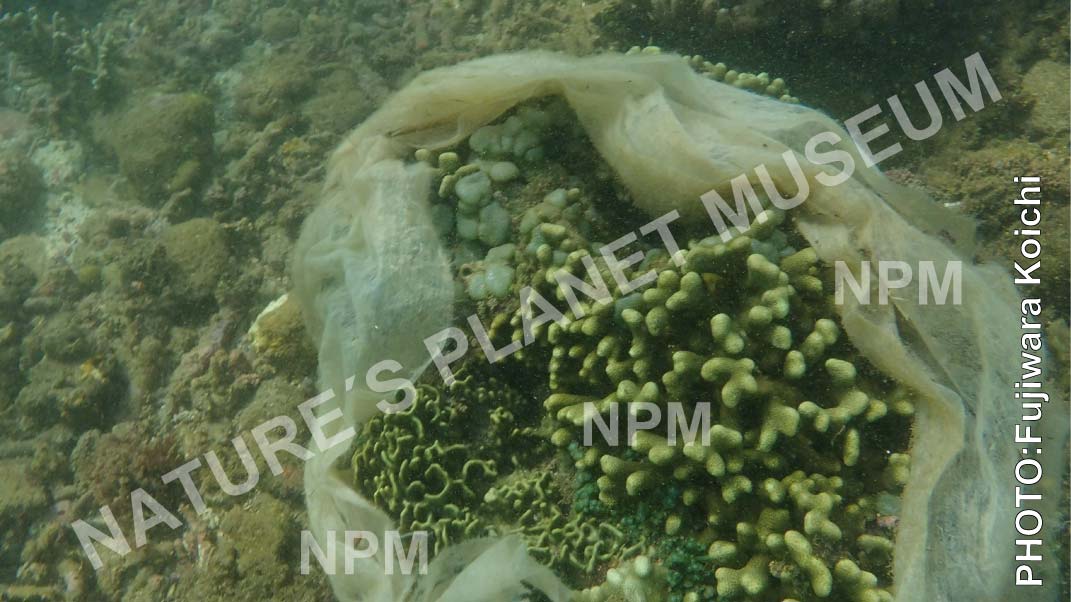
|

|
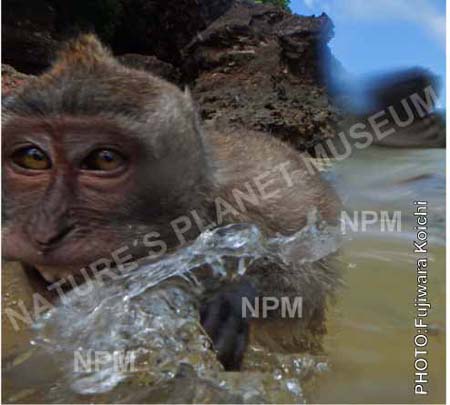
|
|
There
was a collection of strings near the plastic bottle.
It
is a plastic net used by humans for fishing.
There was a dead fish tangled up in this net that was dumped.
The
mother was worried that her baby would also get caught in the plastic net.
Near
the net, there were corals entwined with plastic bags.
The
parts of the coral where the plastic bags are touching have blackened and are starting
to die.
The
mother is worried again that her baby's feet may get caught in this plastic
bag.
While
the baby was diving in shallow water near the sandy beach he was looking at
something moving in the sea.
A crab with big claws was
eating a small plastic bag fragment. The crab actually wanted to eat the
seaweed attached to the plastic bag but is putting the plastic fragment
together into its mouth.
A fish with colorful body painting has appeared in the plastic forest in
the sea. It is a blackpatch triggerfish.
Like
the crab, the fish likes to eat the seaweed that grows on plastic bags. The fish
with a strong tooth can eat the seaweed together with the plastic bag fragment.
A
plastic bag has flowed and touched the mother’s foot.
She
was surprised and suddenly jumpes up.
"This is a scary sea! Let's go back to land!"
The
mother shouted.
The
mother and her baby have given up eating in the sea and left.
Leaving
the sandy beach for the hill, they follow the river to the forest.
|
|
| P52-54 total 7 photos |
|
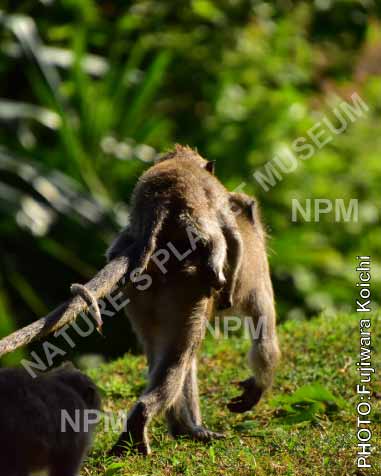 |
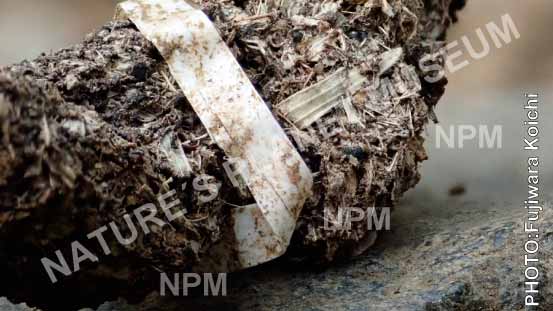 |
|
The
mother with her baby decided to go back to their forest and rest for a while.
On
the way back, the baby has begun to squirm restlessly in the grass.
Apparently, he felt like doing a poop.
The
baby's poo had a white plastic string mixed into it.
|
|
| P55-61 total 13 photos |
|
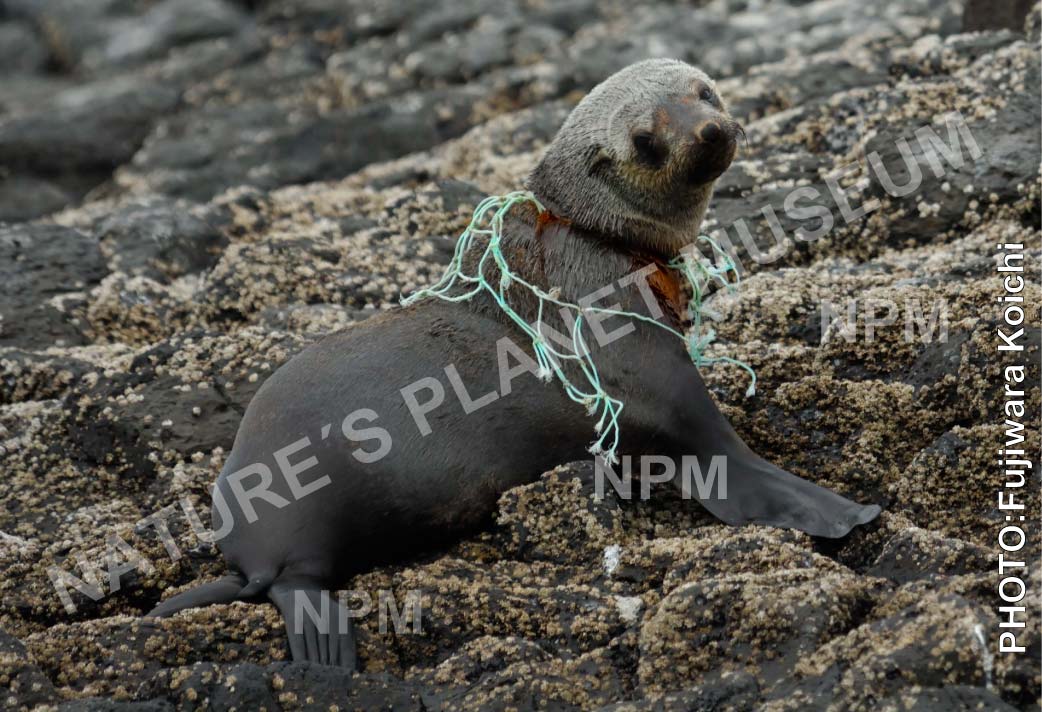
A fur seal stuck in a fishing net abandoned in the Australian sea.
The
broken net is deeply cutting into its body.
There
are many fur seals, sea lions and seals that die from fishing nets in the seas
all around the world.
|
|
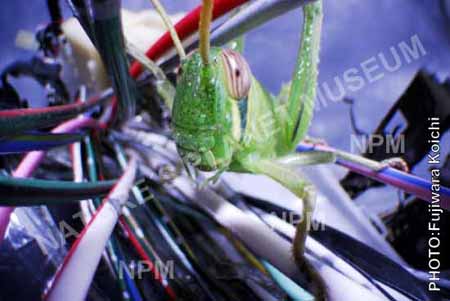
|
Insects
gather at plastic dumps around the world, searching for food and a place to
live.
|
|
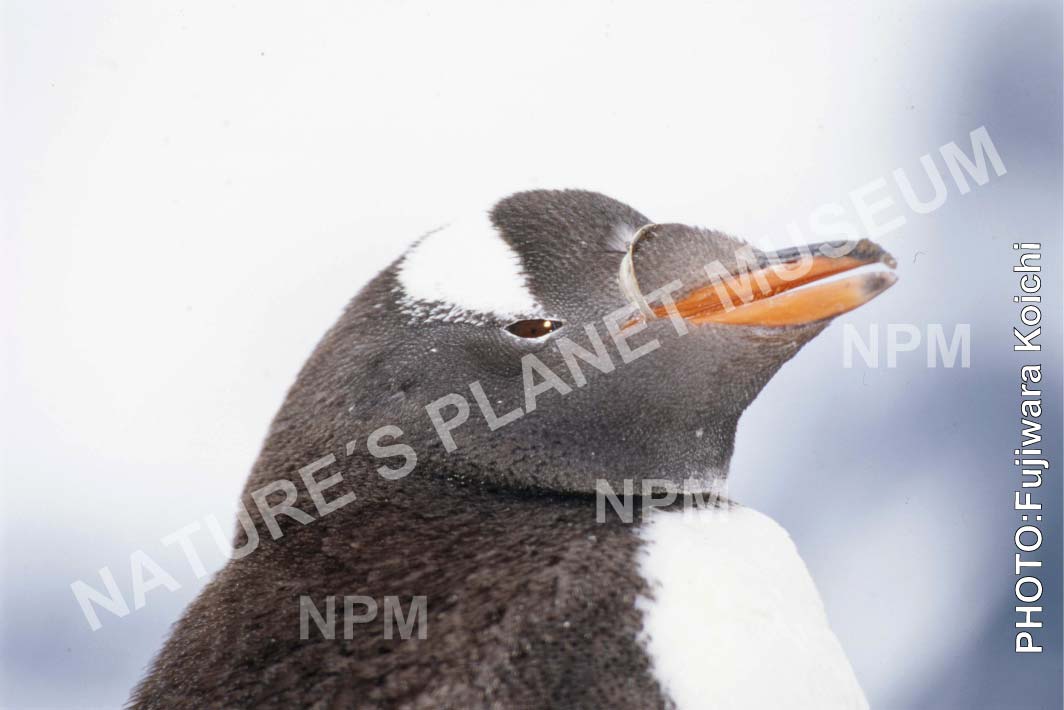
|
This Gentoo penguin living in Antarctica is stuck in a plastic ring it
found at a dumping site. This makes it impossible to catch fish even by
diving into the sea.
|
|
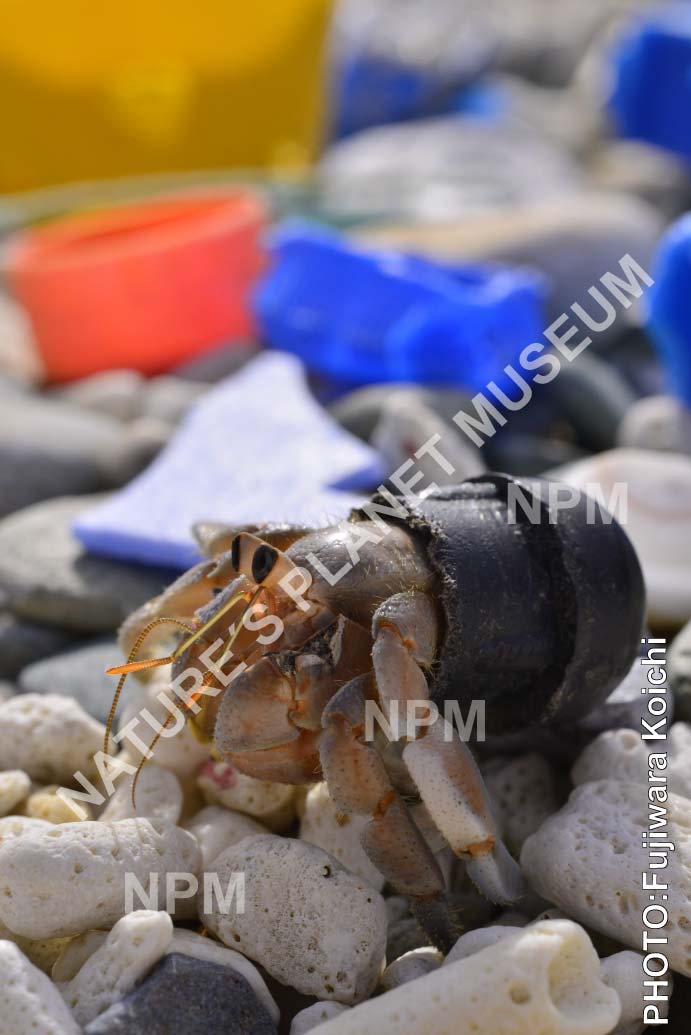
|
A
hermit crab from Okinawa, carrying a wine bottle cap instead of a shell.
There
are many hermit crabs carrying plastic found in the oceans around the world.
Plastics
often carry bacteria and contaminants from the sea.
|
|
|
Creatures
are in danger!
The monkey story introduced in this book are not problems specific to a
particular area or creature.
The
same thing is happening everywhere in the world.
Plastics
are produced all over the world, and many are thrown out.
The
plastics we are producing is about to cover the whole earth.
It
might be impossible to eliminate all plastics from this world.
However,
at this rate the existence of earth and the creatures living on it are in
danger.
The
earth is facing a crisis right now.
Let's
think together about what we can do.
The
plastics we dump are creating problems for the wildlife.
Wild
animals are dying from plastic getting stuck in their bodies after eating
plastic waste.
Even
in the sea, creatures are dying from eating plastic or by getting tangled in
fish nets.
In
addition, plastics have affected the ecology of animals. Birds have started to
use plastic material to make their nests instead of natural twigs.
The
plastic waste that human beings have produced will stay as plastic on earth.
It will
not be broken down by nature.
At
this rate our future is a plastic covered earth.
On the
other hand, things created by nature will eventually be broken down by nature.
That
is materials like paper, wood, food and so on.
|
Photo caption
| 1- |
Within the rubbish illegally dumped in the forests of South Asia, Asian
elephants gather, lured in by the strong smell.
Here,
elephants have eaten all the garbage contained in a plastic bag. |
| 2- |
The
Galapagos finch, a bird found only in the World Heritage Site, Galapagos
Islands in South America.
The finch’s favorite food is the scraps stuck on plastic available at the
dump.
|
| 3- |
Adelie
penguins marching on the Antarctic icefield. What awaits them is a pile of
plastic and other garbage dumped in large quantities in their breeding ground.
Some penguins pick at the plastic waste every time they pass. |
| 4- |
American
bears who live in the Canadian Arctic love the dumping ground.
Some
waste human beings throw away contain sugar and artificial additives which are
not usually found in nature and attracts the bear.
|
| 5- |
There
was a Carrion Crow in a park in Tokyo who was trying to fly off with a plastic
bag in its beak.
There
are a lot of plastic materials mixed into the nests of wild birds living in
cities.
|
|
|
| P62-63 total 7 photos |
|
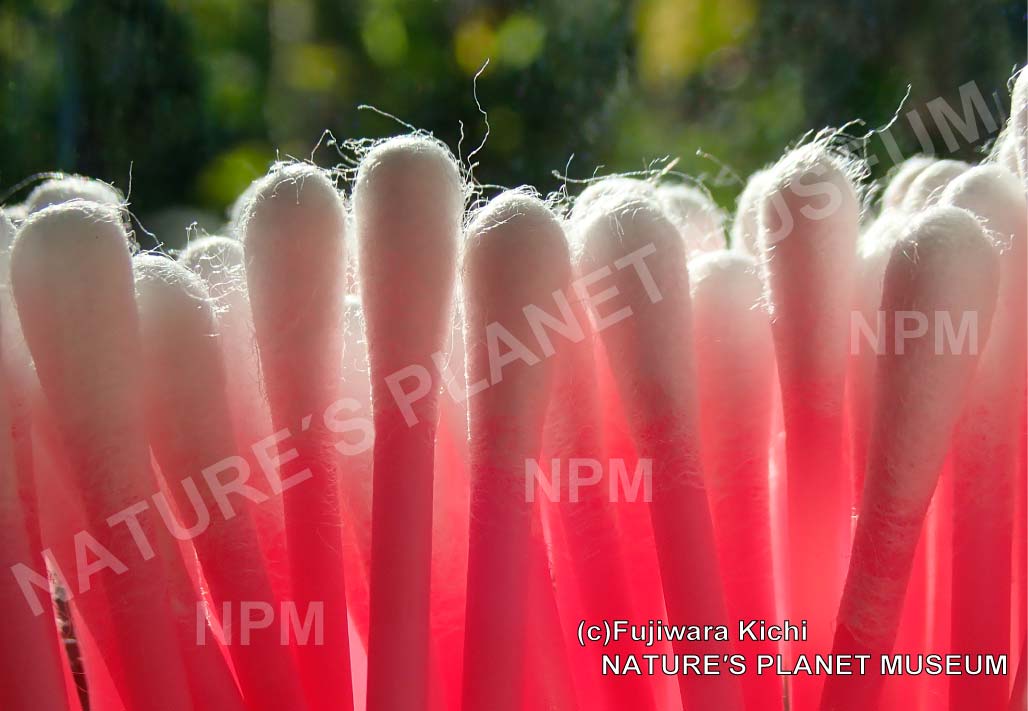 |
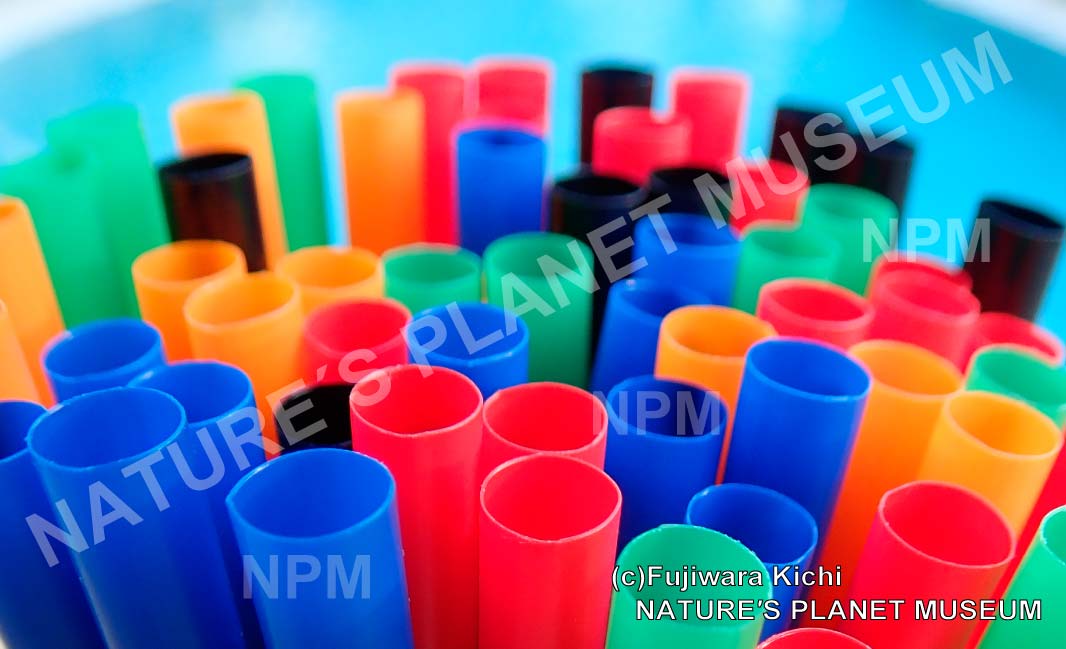 |
|
Life
full of plastic
What
is plastic in the first place?
Plastics were not originally found in nature. It was created by humans.
At first, natural rubber was used as the raw material, then coal and now
most are made from petroleum and natural gas.
Let's
take a look at the plastic around us.
Plastic
bottles are a familiar plastic. It is said that Japanese people consume a drink in a 500ml plastic bottle,
one every two days.
In
other words, in one year 182 plastic bottles are thrown out in the garbage.
In
addition there are, plastic bags, tappers, cups, forks and knives, dishes,
straws, sandals, toys, artificial flowers, plastic bags, balloons, plastic
bags, plastic containers, shampoo containers, parts for tricycles and bicycles,
confectionery bags, etc. , Cotton swabs, makeup tools, hair stops, fishing
lines, fishing rods, TVs, computers, smartphones, boats, building materials for
houses and buildings, car bodies and interiors, etc.
When
you realize, plastic has become an integral part of human life, and is
overflowing.
About
400 million tons of plastics are produced worldwide in one year (2015).
In
addition, the growing economy and population in countries such as China, India
and Africa are increasing the amount of plastic produced each year.
If all
the plastic products made so far in the world were piled up to the height of a
human ankle, it would fill an area 7 times the size of Japan.
|
|
| P64-67 total 7 photos |
|
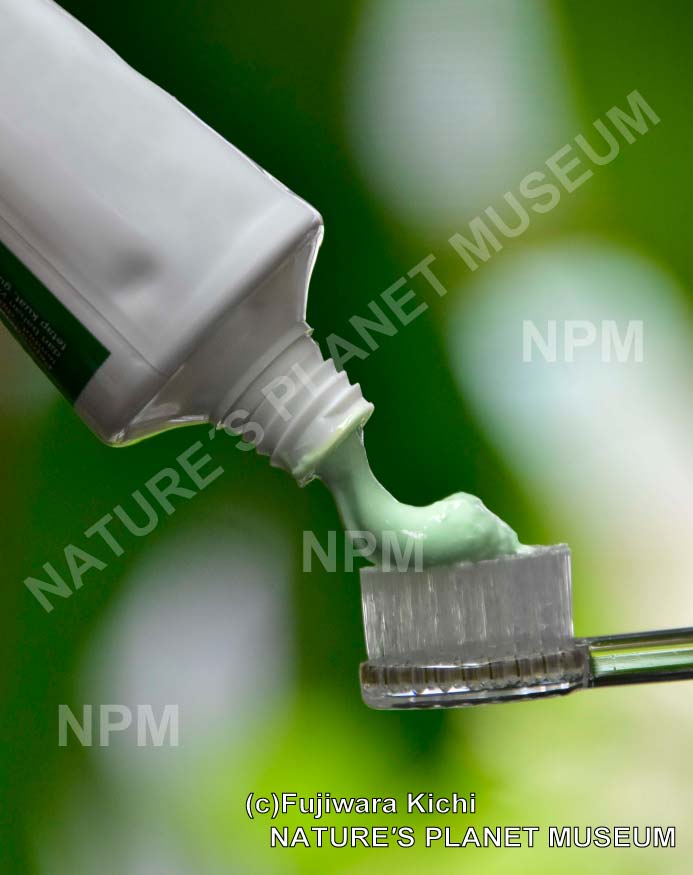
|
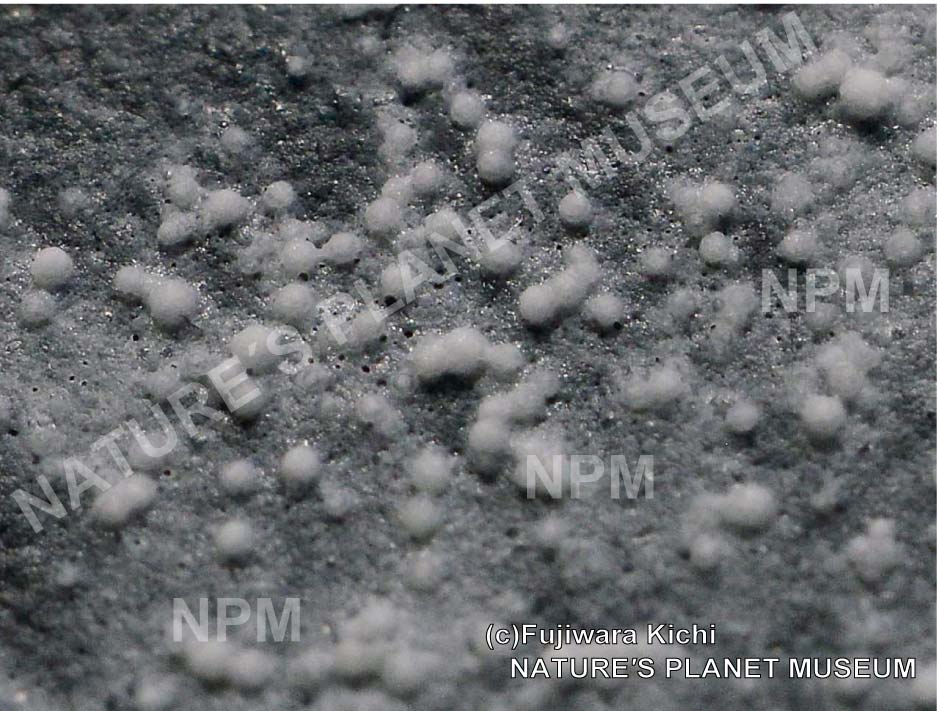 |
|
Plastic
and us
Approximately
4.8 million to 12.7 million tons (8 million tons on average) of plastic are
dumped into the world’s ocean every year.
In the
ocean, the influence of the current has created places where large amounts of
plastic has collected.
The
Pacific Ocean extending to the east of Japan is the largest sea in the world.
In the
northeastern ocean of the Pacific, there is a place where the plastic
accumulated is more than three times as large as Japan.
If
plastic continues to be dumped into the sea, it is predicted that by 2050 the
weight of all fish living in the sea will be the same as the weight of plastic
dumped in the sea.
Plastic
smaller than 5mm is called microplastic.
Plastics
drifting in the ocean are fragmented under the influence of ultraviolet rays
from the sun and waves.
Styrofoam used as food trays are broken down in the sea and turned into
micro plastic.
Plastic
is originally poisonous. In addition, microplastics contain many poisons, such as organic mercury,
dioxins, PCBs, and DDT.
These
poisons are all made by humans and dumped in the sea.
Micro plastic in the body
Some
microplastics have been made by humans.
Microbeads
made from 0.001mm to 0.1mm plastic, called scrubs are used for teeth polishing,
body soap, face wash, etc.
The
microbeads were made to remove dirt however, it was discovered that they flow
from the drains into the river straight out into the sea.
Nowadays
there is a movement around the world to stop using microbeads and switch to use
natural products.
However,
huge amounts of microbeads have already flowed into the sea.
Microplastics
have been found in 92%-95% of mussels eaten in Europe.
Even
if humans eat microplastics, 99% will be excreted as poop.
However,
some of it remains in the body. If it is consumed for several decades, more
than 1000 microplastics remain in the body.
Micro
plastic is also found in fish swimming in the sea around Japan.
|
Photo caption
| 1- |
Styrofoam
that fell apart in the sea.
Used
as packing material and food trays, Styrofoam is widely used all around us.
|
| 2- |
I
placed micro plastics on the side of the fish.
It
turns out that it is the perfect size the fish can eat.
In
actual fact, microplastics have been found in the stomachs of fish, whales and
sea turtles, indicating these animals have consumed plastics.
|
|
|
| P68-70 total 9 photos |
|
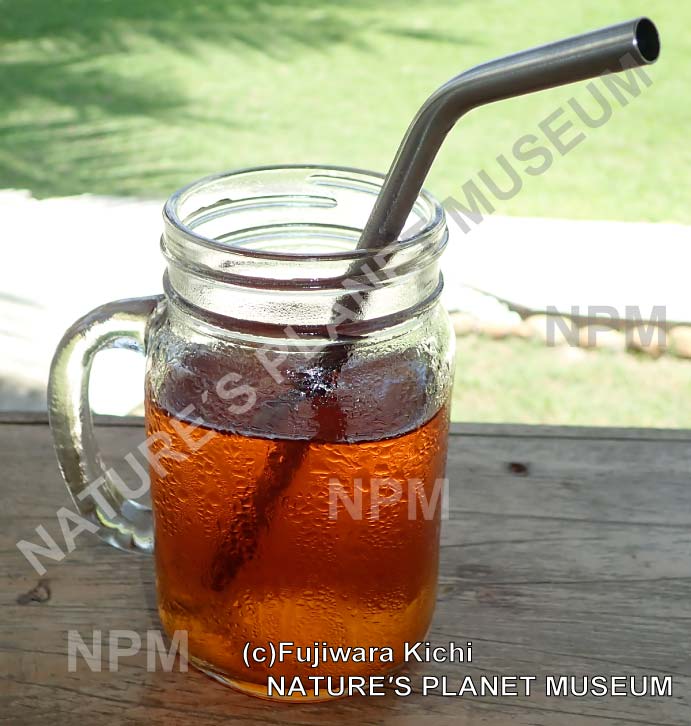
|
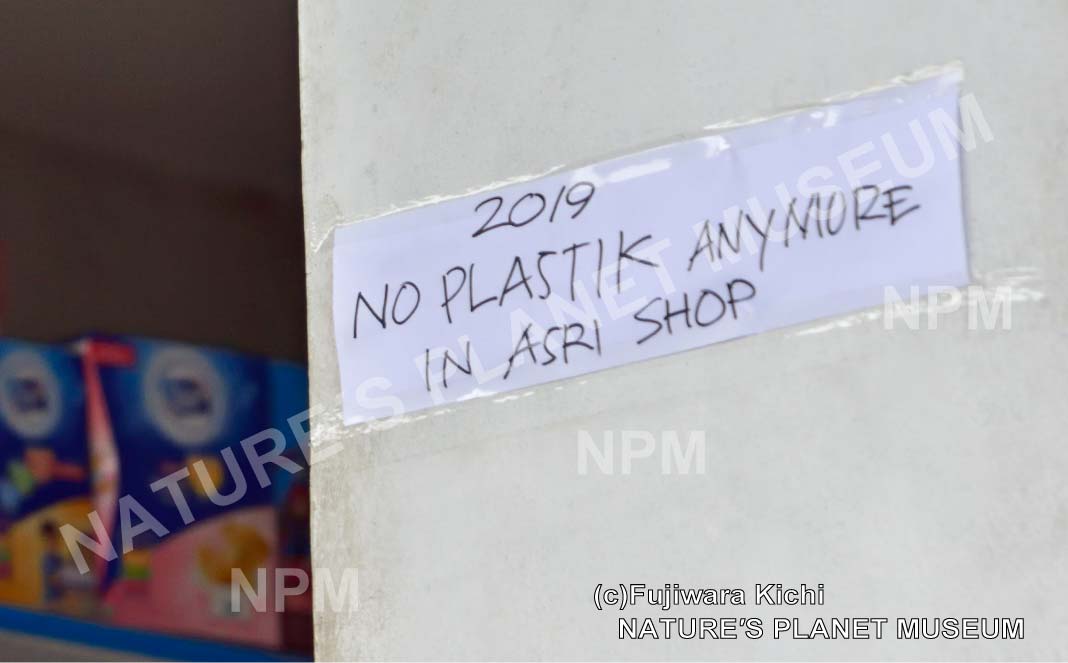
|
Paper
that I saw in a small shop in a village in the east of Bali.The
handwritten text reads, "2019 NO PLASTIC BAGS IN ASRI SHOP"
|
|
Let’s return to earth-friendly life
Until
about 60 years ago in Japan, people still took hand-crafted bamboo and plant
vine baskets and cotton bags to the shops.
When
buying tofu at the tofu shop, people brought metal bowls or a big rice bowl
from home.
When
buying soy sauce or cooking oil, people would take glass jars and say how many
cups they want and have the jar filled at the shops.
It
was an era where plastic products were not widely available in Japan.
During
that era the garbage collected at the collection site was often made of natural
materials such as paper and wood, so it was buried in soil and left to return
to nature.
However,
as technology progressed and plastic products were made in large quantities,
our lives changed.
Much
of the food is packaged in plastic and is now placed into plastic shopping bags
rather than baskets from home.
Large
amounts of plastics have been used and large amounts thrown away.
Because
plastic does not return to nature when buried in soil, it remains as garbage
everywhere on the earth and continues to increase.
In
the past, we have lived in the grace of nature, however giving priority to
convenience and cheapness we are now threatening the global environment.
On
the other hand, recently the efforts to eliminate plastic waste has been
spreading.
Already
more than 60 countries have begun to use and put restrictions on single use
plastics.
There
has been an increase in restaurants and retail stores that do not provide
plastic straws and plastic bags.
In addition, there are some companies that promote the recycling of plastics
and some that are creating products using biodegradable plastics that will
return to soil.
From
now on, it is important for each individual to consider what they can do for
the earth and to ask again whether the current lifestyle is really okay.
|
Photo caption
| 1- |
A
bag made of biodegradable plastic that turns back into soil
|
| 2- |
JEPLAN, INC.
Developed
technology that chemically recycles the polyester fibers contained in clothes
into polyester resin.
|
| 3- |
Seven & i Holdings Co., Ltd.
PET
bottle collectors installed at convenience stores such as Seven-Eleven and
supermarkets such as Ito-Yokado will process the bottles into packaging
materials after collection.
|
| 4- |
SKYLARK HOLDINGS CO., LTD.
The
company’s restaurants nationwide do not offer plastic straws and instead offer
the company’s biomass straw (made from corn) when requested by customers.
|
| 5- |
KANEKA CORPORATION
We
have developed our own proprietary biodegradable PHBH polymer, which breaks
down in soil or in the sea. It can be used as a material for plastic bags,
dishes and straws.
|
|
|
|
Wild animals are crying
On April 3, 2019 there was news that a deer, a natural monument in Japan
had died. In its stomach, they found 3.2 kilograms of lumps that were found
to be plastic bags.
The deer was weak and was taken into custody on March 23rd near Todai-ji in Nara City.
On the 27th when inspected by the “Saika Shigakai of Nara”, they found
so much plastic in its stomach.
In fact, in recent years there have been many incidents around the world where plastic has been found in the stomach of dead wildlife.
For
example, on June 4,2018, on the eastern coast of Thailand, a green turtle was
taken into custody. It had consumed plastic debris, rubber bands and balloons
but unfortunately died two days later.
At
the end of March 2019, 22 kg of plastic waste was found in the stomach of a sperm
whale that was beached on the coast of Sardinia in western Italy.
A dead baby whale was also found in the whale’s body.
Similar
incidents of whales dying from consuming large amounts of plastics has been
recorded in Thailand and the Philippines too.
In particular, a sperm whale corpse found on November 19, 2018 in Kapota
Island, Indonesia had 115 plastic cups, 4 plastic bottles, 25 plastic bags
and 3.26kg of plastic string and 2 pairs of sandals in its stomach.
Like this, wild animals from all over the world are in trouble.
Reducing plastic waste might be very hard.
Nevertheless,
it is something that must be done.
It
might be annoying to take your own shopping bag when grocery shopping, but it
is very important to reduce the amount of single use plastic bags.
It
is also necessary to avoid using plastic plates, cups and buying drinks in
plastic bottles and switch to using glass and water bottles.
It
would be wonderful to get vegetables and fruits that are not prepacked in
plastic.
Make
sure to correctly divide plastic when throwing it out so it will be recycled.
Make sure the earth is not further polluted with plastic waste. For the
future of a beautiful earth.
|
| |
|
|
Video 動画
Please
click this photo to start a footage video.
Wild birds making their nest with plastic straws
ストローで巣作りする野鳥 |
Plastic Ocean
― Every year 800 million tons plastic waste are abandoned into the sea
of the world.―
プラスチックの海
―毎年800万トンのプラスチックが海に捨てられている― |
Plastic wastes illegally dumped are eaten by wild elephants
プラスチックごみを食べてしまう野生ゾウ |
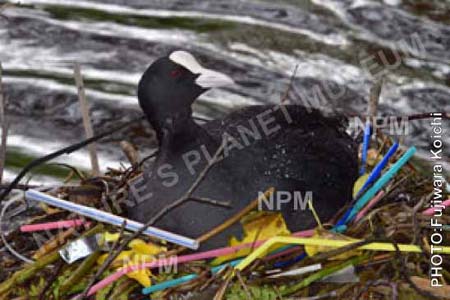 |
 |
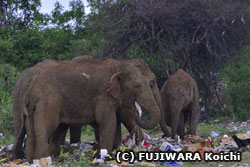 |
|
|
|
|
|
| Copyright(c) FUJIWARA Koichi All Rights Reserved |
|